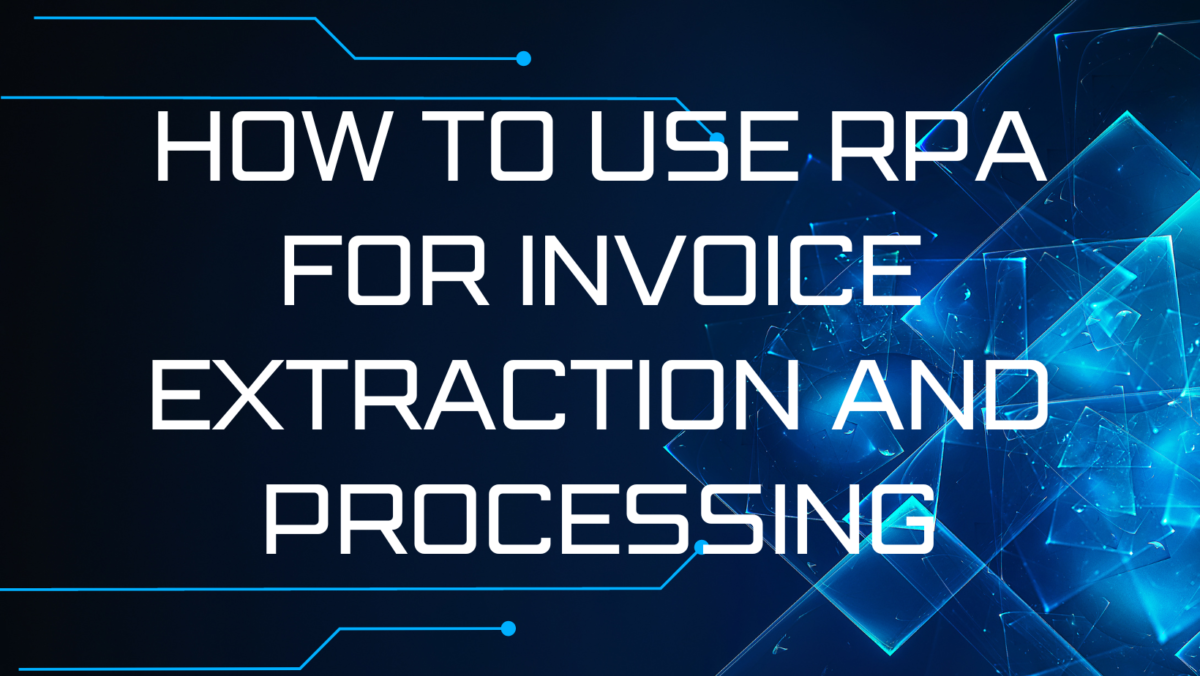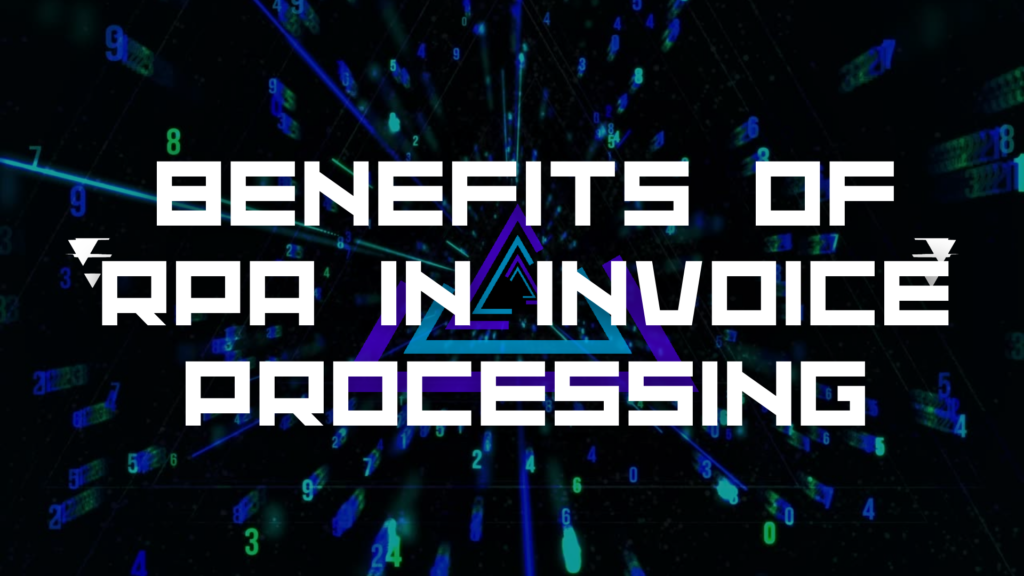This website uses cookies so that we can provide you with the best user experience possible. Cookie information is stored in your browser and performs functions such as recognising you when you return to our website and helping our team to understand which sections of the website you find most interesting and useful.
How to use RPA for Invoice Extraction and Processing

In the field of business operations, Robotic Process Automation (RPA) has emerged as a transformative force. By integrating RPA services, businesses can achieve increased efficiency, precision, and productivity, which are crucial to maintaining a competitive edge in today’s fast-paced digital economy. A domain where RPA particularly excels is in invoice extraction and processing. This article serves as a comprehensive guide for understanding and deploying RPA for invoice extraction and processing, demonstrating how an RPA developer can significantly optimize this business process.
The Conventional Approach to Invoice Processing
Traditional invoice processing is a labor-intensive and time-consuming task. It involves extracting data from invoices, verifying this data against purchase orders, entering data into systems, matching invoices, and finally, approving invoices. The manual nature of these tasks is prone to errors and can lead to significant delays, which can have considerable financial implications.
RPA: A Paradigm Shift
The incorporation of robotic process automation services into invoice extraction and processing has instigated a radical shift in how organizations manage their invoices. RPA bots, developed by proficient RPA developers, can independently perform tasks such as extracting data from invoices, conducting basic checks, entering data into systems, matching invoices, and even sending emails to concerned individuals in case of discrepancies.
Streamline your invoice processing workflow with the power of Robotic Process Automation (RPA) for invoice automation. By implementing RPA, you can automate repetitive tasks such as data entry, validation, and reconciliation, reducing manual errors and saving valuable time. Furthermore, RPA can be seamlessly integrated into your mobile application development process, enabling you to enhance efficiency and accelerate the delivery of robust mobile solutions. Embrace RPA for invoice automation and mobile app development to boost productivity, minimize costs, and unlock new levels of operational excellence.
Benefits of RPA in Invoice Processing

There are several significant benefits of leveraging RPA for invoice extraction and processing, which include:
Cost Savings: Automation of invoice processing tasks can lead to substantial cost savings by reducing the need for manual labor.
Speed and Efficiency: RPA bots can execute tasks faster than humans and work round-the-clock, thereby increasing operational speed and efficiency.
Improved Accuracy: The use of RPA services eliminates the risk of errors in invoice processing by reducing the need for manual data entry and verification.
Enhanced Compliance: Automated invoice processing ensures compliance with internal policies and external regulations as the entire process is logged and can be audited.
Improved Vendor Relationships: Faster invoice processing times can result in timely payments, thereby improving relationships with vendors.
Implementing RPA for Invoice Extraction and Processing: A Step-by-Step Guide
Step 1: Identify the Process for Automation
The journey towards implementing RPA begins with identifying processes suitable for automation. For invoice processing, this could involve tasks like data extraction from invoices, data entry, invoice matching, and discrepancy resolution.
Step 2: Choose the Right RPA Tool
Choosing an appropriate RPA tool is vital. Factors to consider include ease of use, scalability, integration capabilities, and cost. An experienced RPA developer can provide valuable insights during this selection process.
Step 3: Develop and Test the RPA Bot
Once the tool has been selected, the next step involves an RPA developer creating and rigorously testing the RPA bot. The bot is programmed to execute the identified tasks, and rigorous testing ensures its accuracy and efficiency.
Step 4: Deploy the RPA Bot
After the RPA bot has been tested and refined, it is time for deployment. This phase may also entail training end-users and setting up a monitoring system to track the bot’s performance.
Step 5: Monitor and Optimize
Regularly monitoring the performance of the RPA bot and making necessary adjustments is crucial to ensure continued efficiency. This could involve tweaking the bot’s algorithms or expanding its capabilities.
Conclusion
In an era where efficiency and accuracy are paramount, RPA stands as a powerful tool, particularly in areas like invoice extraction and processing. By integrating RPA, businesses can automate labor-intensive tasks, save costs, improve accuracy, and boost productivity. Remember, the journey towards successful RPA implementation requires careful planning, execution, and ongoing optimization. By following the steps outlined in this guide, you can unlock new levels of operational excellence in your organization.



